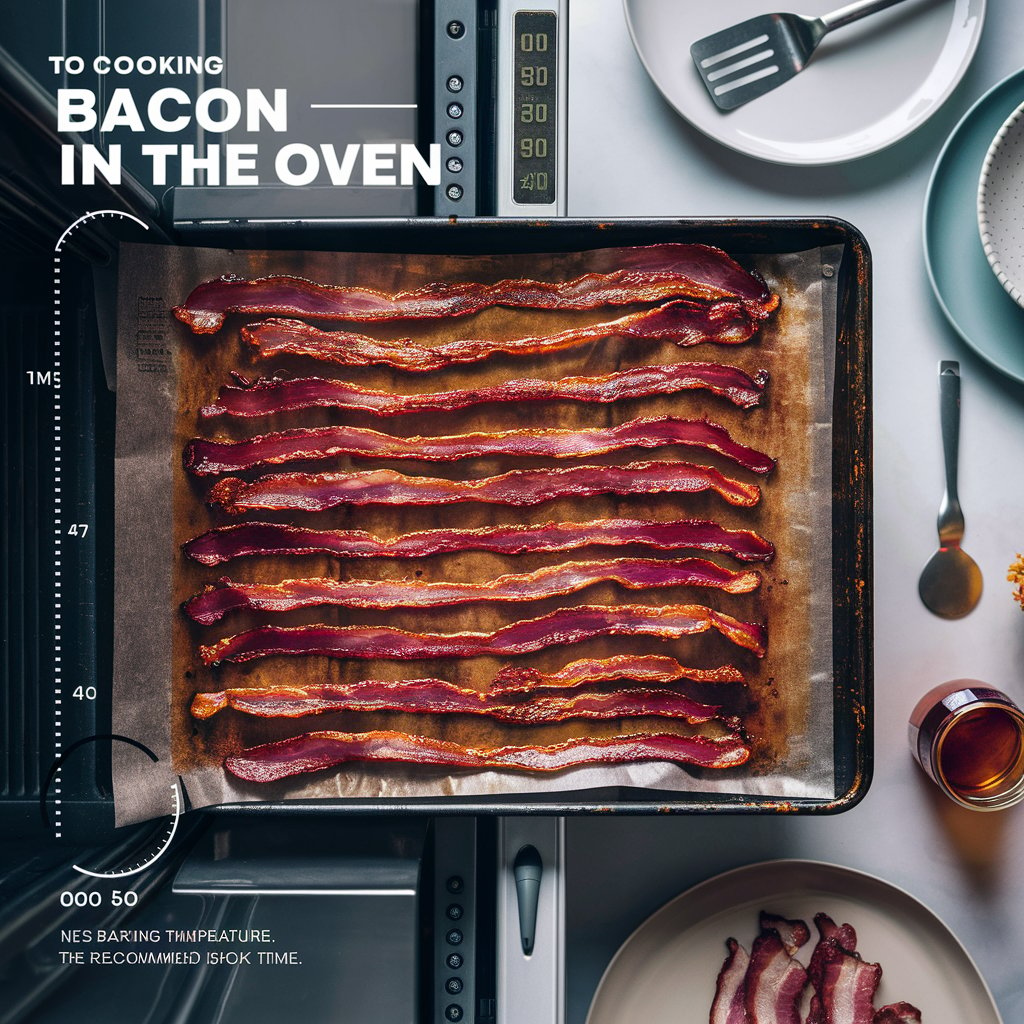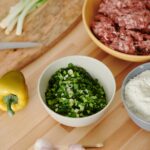For those who enjoy cooking bacon in the oven, baking bacon is a game-changer. This method is simple, effective, and yields consistently crispy bacon, regardless of experience level in the kitchen. This extensive tutorial will cover the benefits of baking bacon, how-to directions, common mistakes to avoid, and even some inventive recipes that you can make with your bacon. Now let’s get started!
Why Cook Bacon in the Oven?
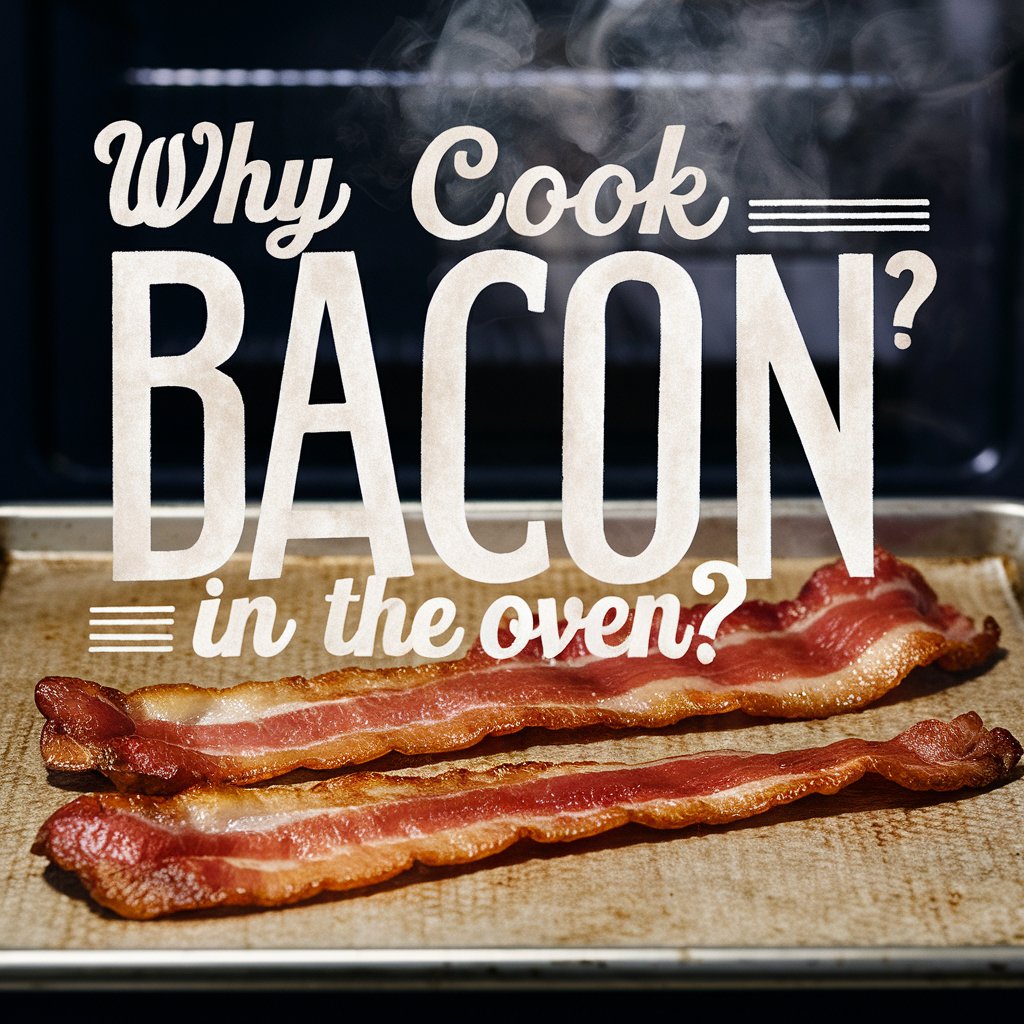
1. Even Cooking
The consistent cooking that comes from baking bacon is one of its main benefits. The oven evenly distributes heat, in contrast to the stovetop method where hot spots frequently cause bacon to cook unevenly. This guarantees that there are no burnt or undercooked areas on any slice and that it is cooked to perfection.
2. Less Mess
When bacon is cooked on the stovetop, your kitchen may get covered in greasy splatters. On the other hand, since the bacon is enclosed on a baking sheet, roasting it in the oven reduces mess. As the grease gathers on the sheet, cleanup is considerably simpler.
3. Healthier Option
Bacon cooked in the oven loses some of its fat content, making it a marginally healthier choice. To let even more fat drip off the bacon, you can also place it on a rack.
4. Cook Large Batches
You can cook a lot of bacon at once using the oven method, which is great if you’re preparing for a crowd or meal planning for the week. This is particularly helpful for brunches and breakfast events, or when you require bacon for several different dishes.
How to Cook Bacon in the Oven: Step-by-Step Instructions
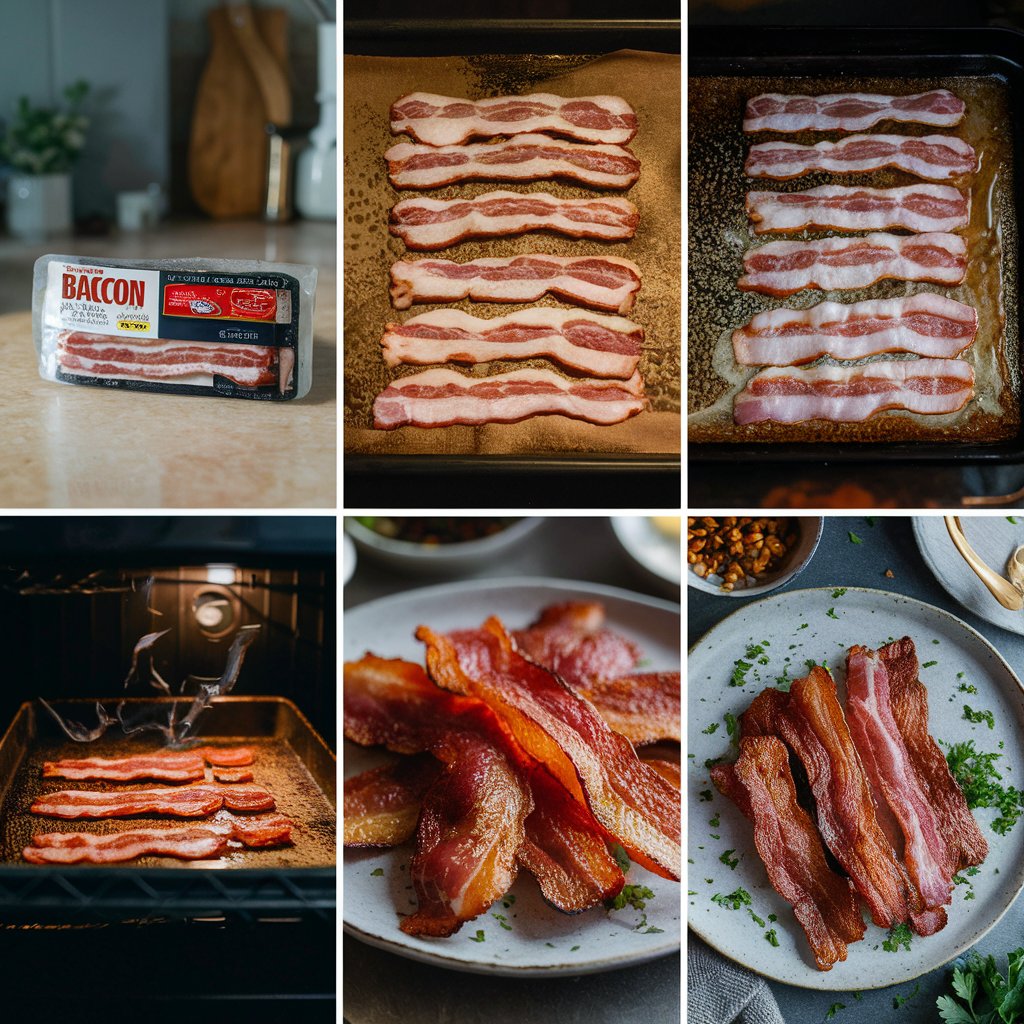
Step 1: Preheat Your Oven
Set oven temperature to 400°F, or 204°C. Bacon cooks most evenly at this temperature without scorching. You can turn the temperature up to 425°F (218°C) if you like your bacon particularly crispy, but watch it closely.
Step 2: Prepare Your Baking Sheet
Use aluminum foil or parchment paper to line a baking sheet with a rim. There won’t be any grease spills into your oven thanks to the rimmed border. Put a wire rack on top of the baking sheet for an even healthier alternative. This gives the bacon a crispier texture by allowing the fat to drain off of it.
Step 3: Arrange the Bacon
Arrange the bacon strips on the wire rack or baking sheet in a single layer. Avoid having the strips overlap as this can lead to uneven frying. Use several baking sheets if you’re preparing a big batch, but don’t stack them in the oven; instead, place each sheet on a rack.
Step 4: Bake the Bacon
Bake the baking sheet for 15 to 20 minutes after placing it in the oven. The thickness of your bacon and the level of crispiness you want will determine the precise cooking time. While thick-cut bacon may require up to 25 minutes, thin-cut bacon can be completed in as little as 12.
Step 5: Check for Doneness
To ensure consistent cooking, turn the baking sheet halfway through cooking. To avoid overcooking, begin monitoring the bacon at the fifteen-minute mark. When the bacon is crispy and has turned a deep golden brown, it is done.
Step 6: Drain and Serve
To drain any extra fat, move the cooked bacon with tongs to a plate covered with paper towels. Before serving, allow the bacon to cool for a minute or two. Savor the crunchy, perfectly cooked bacon!
Tips and Tricks for Perfect Oven-Baked Bacon
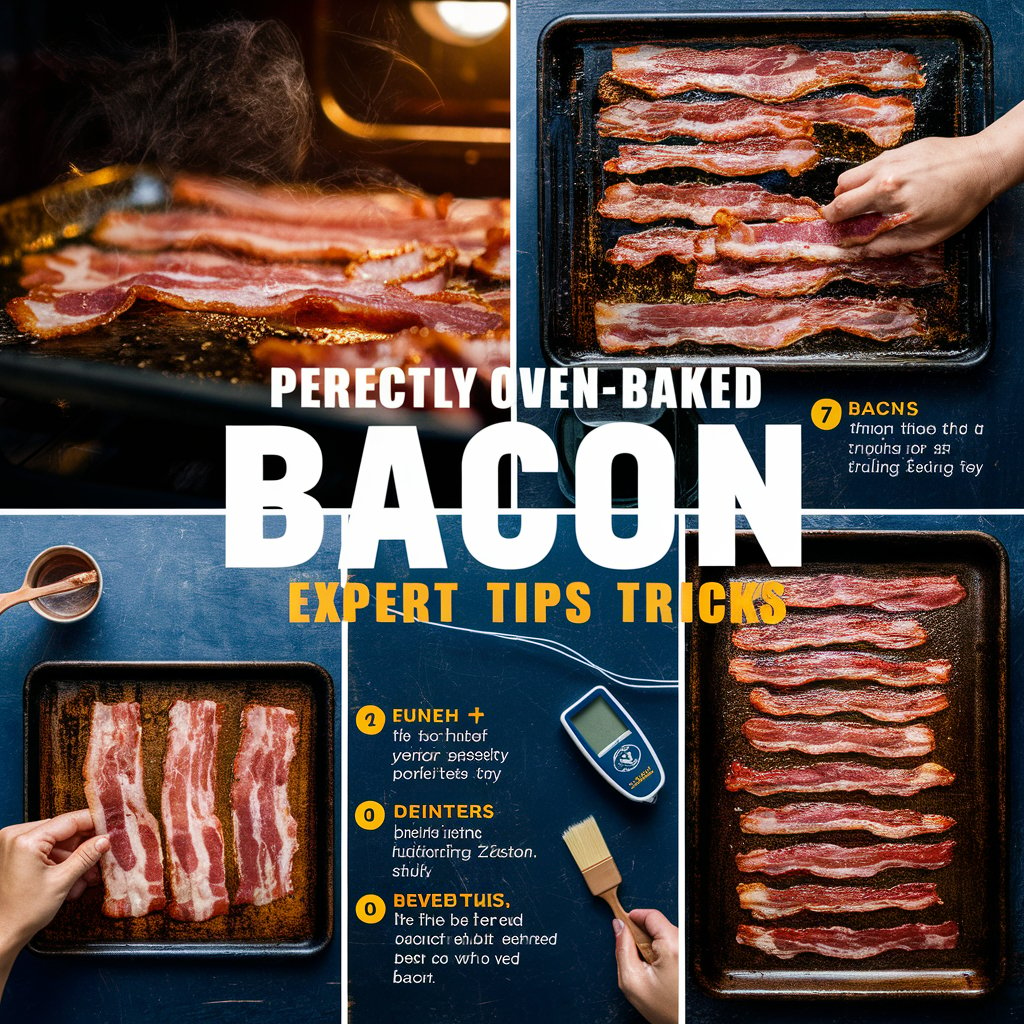
Adjusting for Crispiness
Cook the bacon for a few minutes less if you like it chewy rather than crispy. Increase the cooking time by a little bit and think about turning the oven up to 425°F (218°C) for extremely crispy bacon.
Using a Cooling Rack
Bacon cooks crispier when cooked on a wire cooling rack set over a baking sheet, which allows fat to drain from the bacon. Air can circulate around the bacon strips using this method, which also helps the bacon cook more evenly.
Flavored Bacon
Try adding flavors prior to baking for a unique take on classic bacon. To give the bacon strips a sweet or spicy twist, sprinkle them with brown sugar, maple syrup, or a dash of cayenne pepper. Additionally, you can experiment with various spices like black pepper or smoky paprika.
Thick vs. Thin Cut
Whereas thin-cut bacon cooks more quickly and is crispier, thick-cut bacon is typically heartier and chewier. Depending on the thickness of the bacon you’re using, adjust the cooking time. Bake thick-cut bacon for an additional 5 to 10 minutes.
Common Mistakes to Avoid
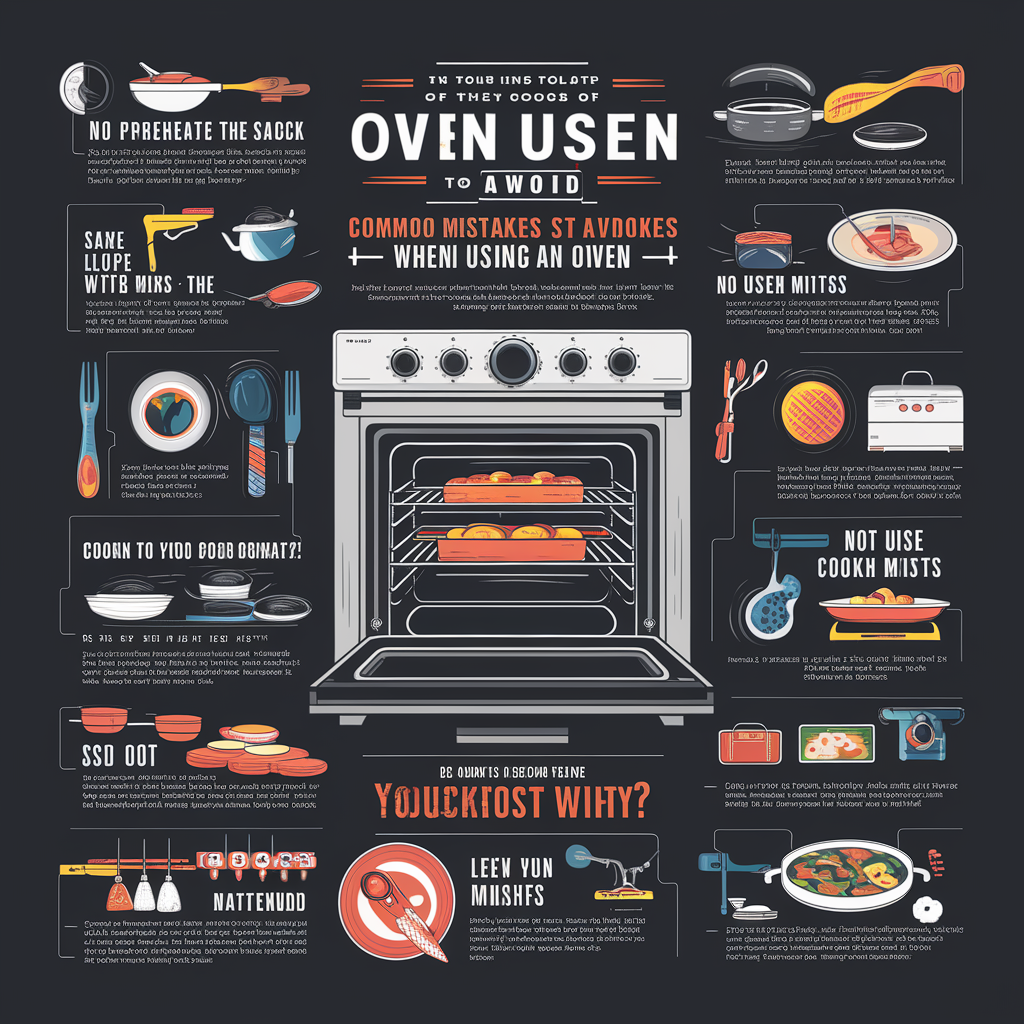
Overcrowding the Pan
On the baking sheet, try not to overlap the bacon strips. Uneven cooking can result from crowding, with some parts being overdone and others being underdone. Make sure there is always adequate room for each strip to cook evenly.
Not Preheating the Oven
Make sure your oven is preheated before adding the bacon. Inconsistent results may arise from starting with a cold oven since this might cause uneven cooking and extended cook times.
Cooking at the Wrong Temperature
Bacon that has been cooked too low may become greasy, and bacon that has been cooked too hot may burn. For optimal results, adhere to the suggested 400°F (204°C) temperature.
Ignoring the Bacon
Particularly near the conclusion of the cooking period, bacon can quickly shift from nicely cooked to burned. During the last few minutes, watch the bacon to make sure it doesn’t overcook.
Cleaning Up After Cooking
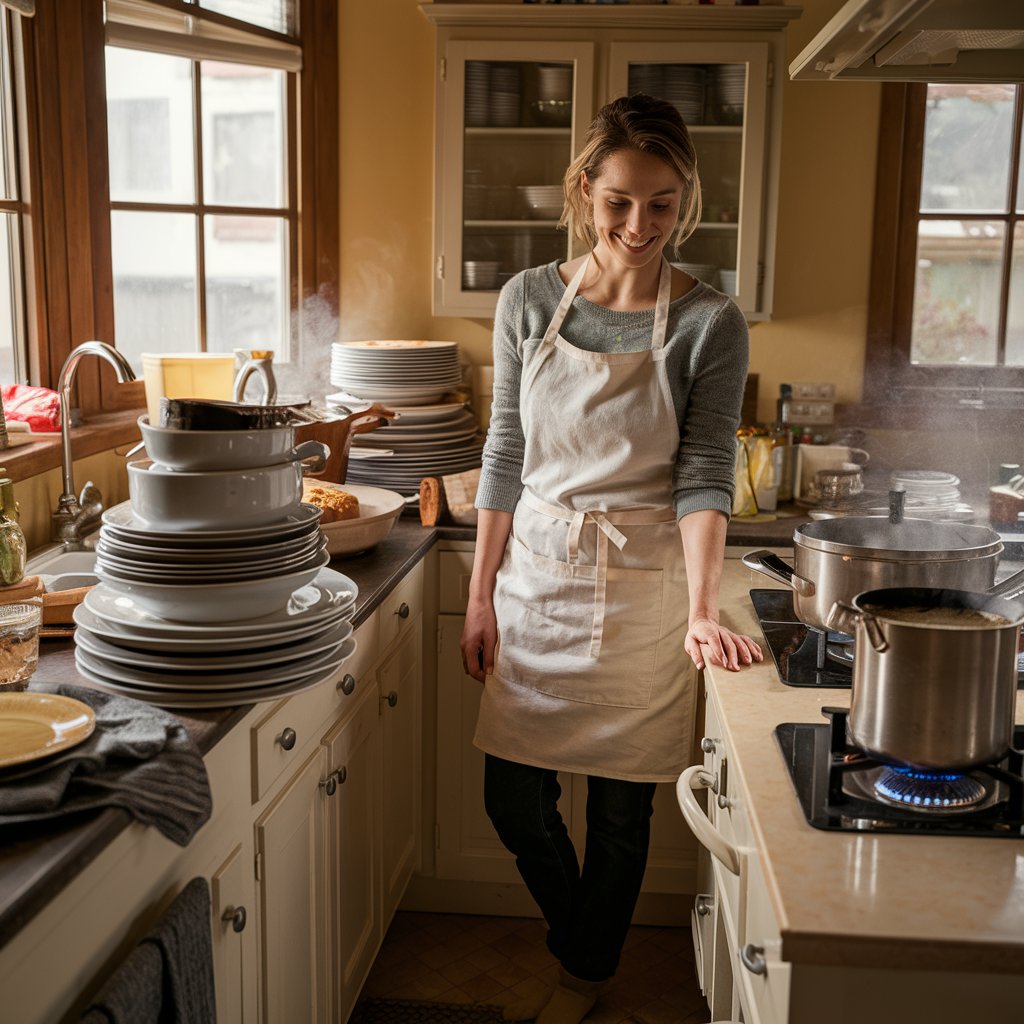
Proper Disposal of Bacon Grease
It is never a good idea to dump bacon grease down the drain since it might solidify and create blockages. Rather, allow the grease to cool a little before transferring it into a heat-resistant container. When bacon grease solidifies, you can either throw it in the garbage or keep it in the refrigerator for later use.
Cleaning Your Baking Sheet
Cleaning up will be a snap if your baking sheet is lined with parchment paper or foil. Just take out the liner and throw it away. If not, immerse the baking sheet in hot, soapy water before cleaning to help break up any stubborn oil.
Dealing with Grease Splatter
Some grease splatter may still happen inside the oven when using the oven method. To avoid grease splatters and future smoke, clean the inside of the oven with a moist cloth or sponge after cooking.
Frequently Asked Questions (FAQs)

Can I Cook Turkey Bacon the Same Way?
Yes, you may use the same technique to cook turkey bacon in the oven. But since turkey bacon is usually leaner than hog bacon, it might cook more quickly. In order to prevent overcooking, check the turkey bacon after 10 to 12 minutes.
How Do I Store Leftover Bacon?
Cooked bacon leftovers can be kept in the fridge for up to five days in an airtight container. The bacon can be reheated in the oven for five to seven minutes at 350°F (177°C) or in the microwave for 20 to 30 seconds on a plate covered with paper towels.
Can I Use This Method for Cooking Bacon Bits?
Indeed! Cooking the bacon until it’s extremely crispy and letting it cool somewhat before breaking it into small pieces is how to make bacon bits. You may add bacon bits to soups, baked potatoes, and salads.
Creative Recipes Using Oven-Baked Bacon
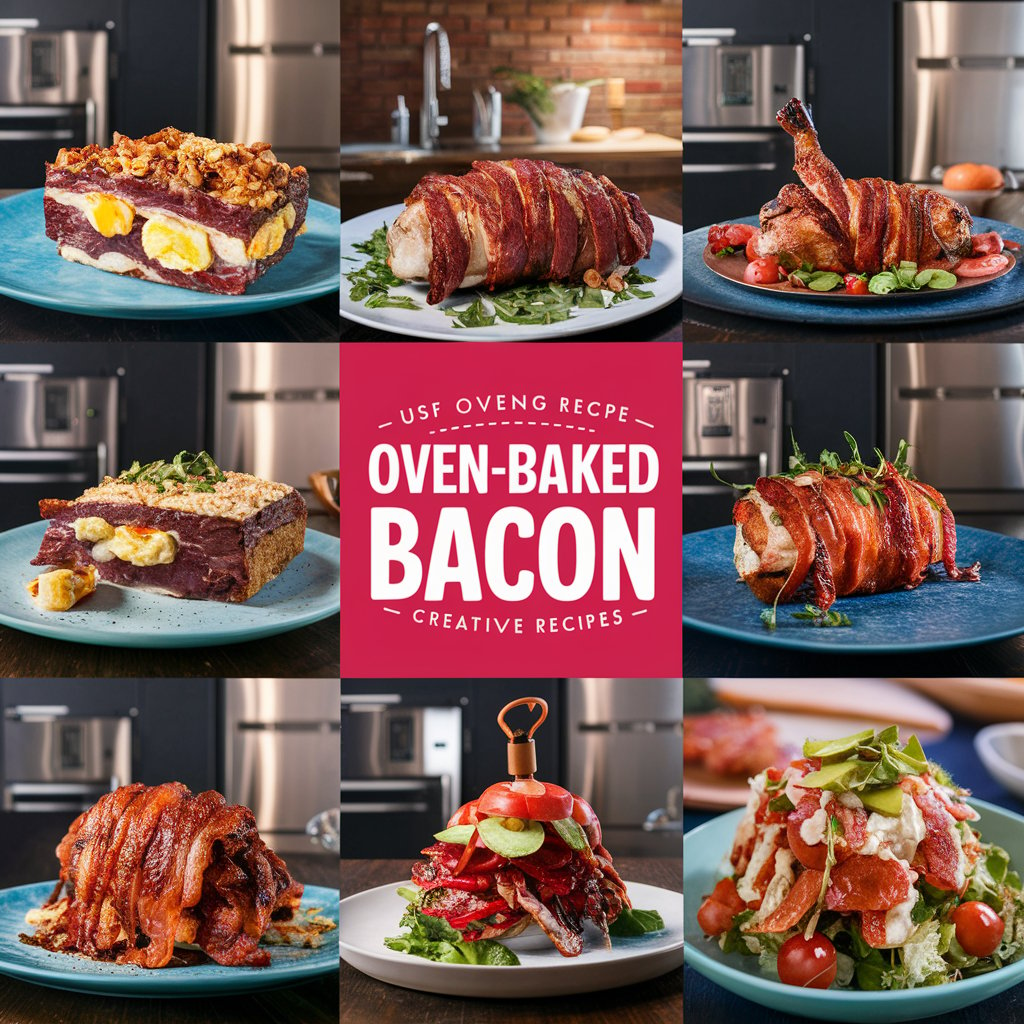
Bacon-Wrapped Asparagus
Wrapping your oven-baked bacon around asparagus spears is a great way to elevate it. Arrange the asparagus wrapped in bacon on a baking sheet and bake it at 400°F (204°C) for 12 to 15 minutes, or until the asparagus is soft and the bacon is crisp.
Bacon Crumble Salad
Homemade bacon crumbs give your salad a crunchy, flavorful touch. Just crumble your bacon from the oven into little pieces and serve with your preferred salad. Any salad is elevated by the flavor and texture of the bacon crumbles.
Bacon Breakfast Sandwich
Use the oven-baked bacon to make a filling breakfast sandwich. Arrange a fried egg, cheese, and avocado atop a toasted bagel or English muffin topped with crispy bacon slices. This sandwich is ideal for a speedy brunch or breakfast.
Conclusion
Oven cooking bacon is a tried-and-true technique that produces incredibly crispy bacon with minimal mess and effort. Whether you’re cooking for a large group of people or just yourself, you can always enjoy wonderful bacon by following the instructions provided in this article. To get the most out of your oven-baked bacon, don’t forget to experiment with different tastes, slices, and preparation methods.
So, why do you hesitate? Discover why so many people adore baking bacon by giving it a try today. Remember to leave your thoughts, advice, and best recipes in the section below!
